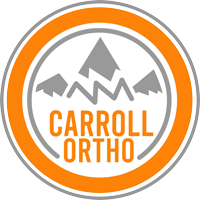Getting braces can be a significant step toward achieving the perfect smile. Whether you're in Hamilton or Stevensville, MT, this journey is about more than just aesthetics; it’s an investment in your dental health. Braces work by gradually shifting teeth into their desired positions using gentle pressure over time. However, with this transformative process comes certain responsibilities—especially when it comes to your diet.
Eating with braces may feel like navigating a minefield at times. Some of your favorite treats might suddenly become off-limits, and you could find yourself wondering what you can safely enjoy during treatment. Understanding which foods to avoid will not only protect your braces but also contribute to quicker results and a healthier mouth overall.
Let’s dive into the types of braces available, how they function, and why being mindful of your food choices is essential on this orthodontic adventure!
Types of Braces and How They Work
Braces come in various types, each designed to straighten teeth effectively.
- Traditional metal braces are the most common option. They consist of brackets and wires that gently shift teeth into place over time.
- Ceramic braces offer a subtler appearance. Made from clear materials, they blend with the natural color of your teeth, making them less noticeable than metal options.
- Lingual braces sit behind the teeth, providing an invisible solution for those seeking discretion. While effective, they can be more challenging to clean and adjust.
- For those who prefer convenience, clear aligners like Invisalign have gained popularity. These removable trays gradually move teeth without using traditional hardware.
Each type of brace works by applying continuous pressure on your teeth. This consistent tension encourages gradual movement towards proper alignment, resulting in a straighter smile over time. Contact us to learn more.
Why Certain Foods Can Damage Braces
Braces are designed to gradually shift your teeth into the correct position, but certain foods can interfere with this process. When you eat something hard or sticky, it can put excess pressure on the brackets and wires. This might cause them to loosen or even break.
Sticky candies like caramel and taffy can cling to braces, making it difficult to clean properly. The residue left behind not only increases the risk of cavities but also makes braces less effective.
Crunchy snacks such as popcorn or hard nuts pose another threat. Biting down too forcefully can lead to broken wires or damaged brackets.
Even seemingly harmless foods like apples should be cut into smaller pieces before eating, as biting directly could create unnecessary strain on your orthodontic appliances. These precautions help ensure a smoother journey toward that perfect smile without unexpected setbacks from food mishaps.
The Complete List of Foods to Avoid with Braces
When you have braces, certain foods can pose a real threat to your orthodontic treatment.
- Hard and crunchy items are at the top of the list. Avoid nuts, hard candies, and popcorn kernels—these can break brackets or wires.
- Sticky substances like caramel and chewing gum should also be eliminated. They cling to braces and make cleaning a nightmare.
- Then there are foods that require biting into directly. Apples, corn on the cob, and raw carrots can put unnecessary stress on your braces.
- Stay away from anything overly sugary or acidic. Sodas and citrus fruits may contribute to tooth decay around brackets if not cleaned properly after eating.
Being mindful of these food choices will help ensure your journey with braces is smooth sailing!
Tips for Eating with Braces
Eating with braces can be a little tricky, but it doesn’t have to be complicated.
- Start by choosing softer foods that are easy on your teeth and brackets. Think mashed potatoes, yogurt, or smoothies—these options won’t aggravate your mouth.
- When you're in the mood for something crunchy, go for softer fruits like bananas or avocados instead of hard apples. They’ll satisfy those cravings without risking damage to your braces.
- Cutting food into small pieces makes chewing much easier. This minimizes pressure on your braces and helps avoid any potential discomfort.
- Always keep a water bottle handy to rinse away food particles after meals. It’s an easy way to maintain cleanliness throughout the day while keeping your smile bright.
- Don’t forget about using orthodontic wax if you feel any irritation from the wires or brackets; this can make eating more comfortable during adjustment periods.
Maintaining Good Oral Hygiene with Braces
Maintaining good oral hygiene with braces is crucial for your dental health. Braces can trap food particles and plaque, making it essential to stay diligent.
- Start by brushing at least twice a day using a soft-bristle toothbrush. A fluoride toothpaste helps strengthen enamel and fight cavities. Don’t forget to brush around the brackets and wires carefully.
- Flossing might seem tricky, but it's vital. Use orthodontic flossers or a floss threader to navigate between teeth easily.
- Consider adding an antimicrobial mouthwash to your routine. It can reach areas that brushing may miss, ensuring thorough cleaning.
- Regular visits to your orthodontist are key, too. They’ll check on your progress and help you maintain optimal oral health throughout your treatment journey.
- Avoid sugary snacks that promote plaque buildup while wearing braces. Your smile will thank you later!
How Long Do You Need to Avoid These Foods?
The duration for avoiding certain foods with braces can vary. Typically, patients are advised to steer clear of problematic items while wearing their braces, which usually lasts between 18 months to three years.
After your braces come off, many restrictive guidelines ease up. However, some caution remains essential as teeth adjust to their new positions.
Listening to your orthodontist is key. They will provide personalized recommendations based on your treatment plan and progress.
Keep in mind that it’s not just about timing; it’s also about learning better eating habits. Developing a mindful approach towards food choices can help protect both your dental work and oral health long after the braces are gone.
Stay aware of how you feel when consuming different types of foods throughout treatment. This awareness aids in making informed decisions moving forward, ensuring a smoother transition once those brackets are removed.
Conclusion: A Healthy Smile is Worth the Sacrifice
Having braces is a journey that many people in Hamilton and Stevensville, MT, embark on to achieve a healthier smile. While it may require some dietary adjustments, the benefits far outweigh the temporary sacrifices. By steering clear of certain foods that can damage your braces and following tips for proper care, you set yourself up for success.
Remember that good oral hygiene during this time is crucial not just for comfort but also for long-term dental health. The investment in your smile now will pay off with confidence and improved oral function later. So embrace the process and keep your eyes on the prize: a beautiful, straight smile that's worth every effort made along the way.
Get in touch with Carroll Orthodontics at 1116 W Main St, Hamilton, MT 59840, or 3920 US Hwy 93, Stevensville, MT 59870, or call (406) 363-2200 to learn more about braces and how they can benefit your smile!


